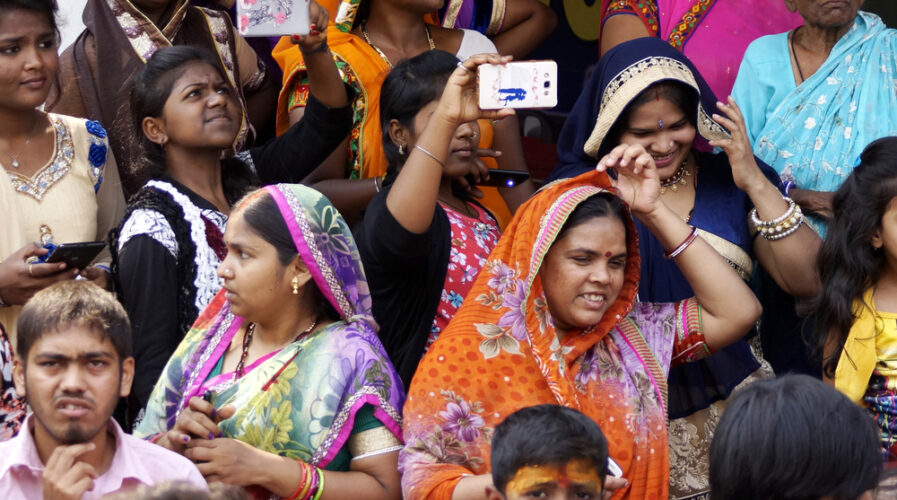
There’s a gender barrier to mobile phone ownership in Asia – and it matters
Women globally are disproportionately affected by inequality, especially in employment, and when it comes to internet access and phone ownership, it is not much different.
However, a record number of women in South Asia now use mobile internet services, helping shrink the phone ownership gender gap to 15% from 19% last year in low-and middle-income countries despite the onset of COVID-19, according to the fourth annual GSMA Mobile Gender Gap Report published this year.
Tech Wire Asia spoke to Claire Sibthorpe, Head of Connected Women, Connected Society, and Assistive Tech at GSMA on the importance of mobile phone ownership, especially in regards to women in South Asia.
Can you tell us more about womens’ barriers to mobile and internet access?
The barriers to access to mobile internet for women are literacy & skills, affordability, safety and security, and lower awareness of mobile internet. Structural inequalities in society and discriminative social norms also remain a challenge.
Even when women have the same levels of education, income, literacy, and employment as men, they are still less likely to own a mobile phone or use mobile internet.
GSMA works closely with the mobile industry to drive efforts to accelerate digital and financial inclusion for women across Africa, Asia, and Latin America. We invite MNOs to make formal commitments to reduce the gender gap in the customer base of their mobile internet or mobile money services in their markets. We then support them to achieve their Commitments, including helping them to ensure their actions to reach women are both commercially sustainable and socially impactful.
As part of the GSMA Connected Women Commitment Initiative which launched in 2016, 40 mobile operators have made formal commitments to accelerate digital and financial inclusion for women across Africa, Asia, and Latin America. So far, they have collectively reached over 40 million additional women with these services.
Their efforts include offering low-cost internet-enabled handsets to address issues affecting women. They include price sensitivity; savings and loans products aimed at women; emergency balance and alerts to help women feel safer when using mobile phones; recruiting female agents and merchants; improving digital literacy among women through educational programs and interactive content; helping women’s agricultural groups see the benefits of mobile money for payments; improving the data top-up process to be safer and more appealing to women; creating mobile financial products for traditional women’s savings groups; developing and marketing use cases which appeal to women; among others.
Can the impact of increased mobile ownership by women in LMICs be quantified across economic, social, and cultural areas?
Insights on the mobile gender gap are more crucial than ever to inform actions that enable women to benefit from a mobile connection.
The GSMA estimates that if mobile operators could close the gender gap in mobile access and use across LMICs, this would provide an estimated additional US$140 billion in revenue to the mobile industry over a period of five years.
Closing the gender gap in mobile access and use could generate a revenue uplift for the mobile industry of 12 to 37 percent in a typical low-and middle-income market in Africa, and 11 to 54 percent in Asia.
In addition, closing the gender gap in mobile internet use across LMICs could add US$700 billion in GDP growth across five years. This would represent an additional 0.7 percent of GDP growth in these countries over the five-year period.
These figures demonstrate that bridging the mobile gender gap will bring benefits to society, the economy, and to individual women and families, while also contributing to the achievement of the UN Sustainable Development Goals, many of which are supported or underpinned by connectivity in a variety of different ways as well as SDG 5 in particular (Gender equality and the empowerment of all women and girls).
How can the private sector help to address the mobile gender gap?
Our top three recommendations for the mobile industry to address the mobile gender gap are:
- Set gender targets to reach women that are endorsed and communicated by leadership.
- Understand the mobile gender gap and the commercial opportunity of closing it by improving the quality and availability of gender-disaggregated data and understanding of women’s needs and barriers to mobile ownership and use
- Ensure your products, services, marketing, and distribution holistically address women’s barriers and aspirations in your market (If businesses do not proactively consider reaching women and their needs and aspirations, they are likely to inadvertently maintain or further entrench the mobile gender gap).
READ MORE
- The criticality of endpoint management in cybersecurity and operations
- Ethical AI: The renewed importance of safeguarding data and customer privacy in Generative AI applications
- How Japan balances AI-driven opportunities with cybersecurity needs
- Deploying SASE: Benchmarking your approach
- Insurance everywhere all at once: the digital transformation of the APAC insurance industry
